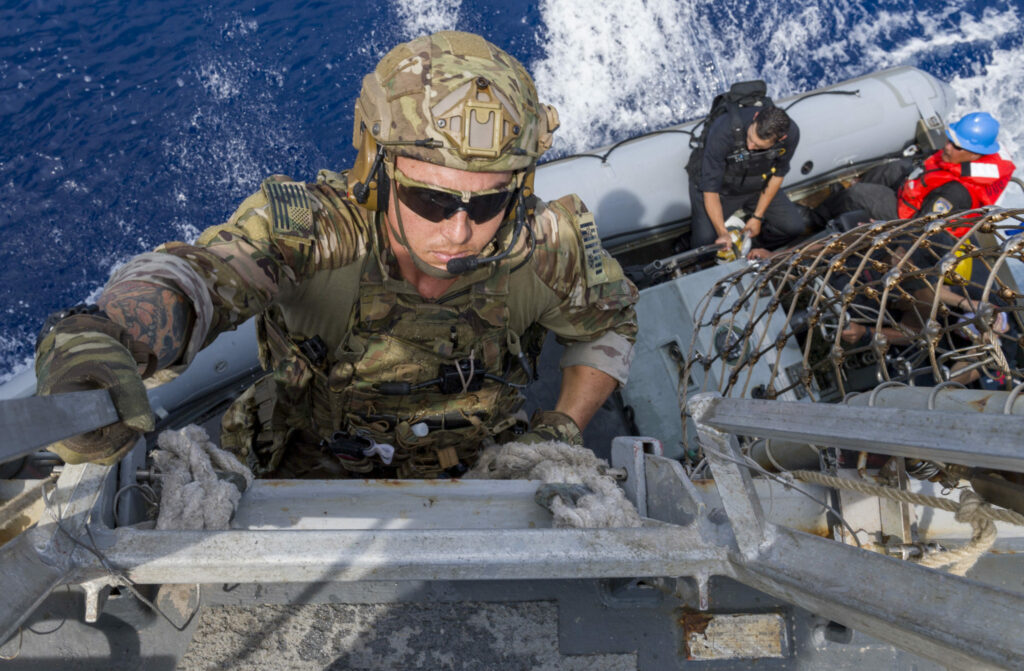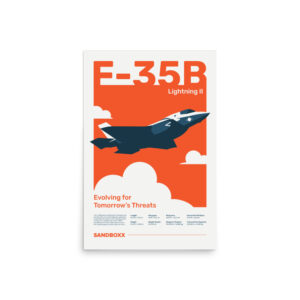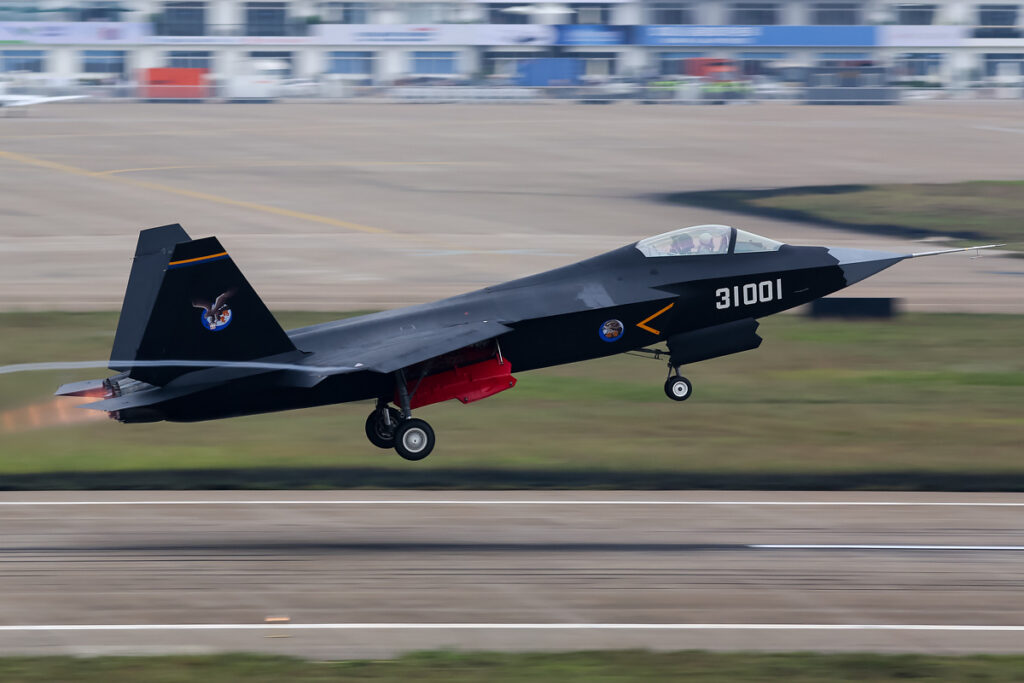These are the Coast Guard’s special operations forces
- By We Are the Mighty
Share This Article

After the attacks on Sept. 11, 2001, it was pretty clear everybody in the government had to get into the anti-terrorism game.
From the formation of the Department of Homeland Security out of a host of separate law enforcement and police agencies, to a more robust role for Joint Special Operations Command in the hunt for terrorist leaders, the American government mobilized to make sure another al Qaeda attack would never happen again on U.S. soil.
For years, the Coast Guard had occupied a quasi-military role in the U.S. government, particularly after the “war on drugs” morphed its domestic law enforcement job into a much more expeditionary, anti-drug one.
But with the World Trade Center in rubble, the Coast Guard knew it had to get into the game.
That’s why in 2007 the Deployable Operations Group was formerly established within the Coast Guard to be a sort of domestic maritime counter-and-anti-terrorism force to address threats to the homeland and abroad. As part of SOCOM, the DOG trained and equipped Coast Guardsmen to do everything from take down a terrorist-captured ship to detecting and recovering dirty nukes.
For six years, the DOG executed several missions across the globe and prepared for security duties in the U.S., including deploying for the 2010 earthquake in Haiti and helping with anti-piracy missions off the African coast (think Maersk Alabama). The DOG even sent two officers to SEAL training who later became frogmen in the teams.
But in 2013, then-Coast Guard Commandant Adm. Robert Papp disbanded the DOG and spread its component organizations across the Coast Guard. And though they’re not operating as part of SOCOM missions anymore, the Coast Guard commandos are still on the job with a mandate to conduct “Ports, Waterways and Coastal Security” missions in the maritime domain.
“The PWCS mission entails the protection of the U.S. Maritime Domain and the U.S. Marine Transportation System and those who live, work or recreate near them; the prevention and disruption of terrorist attacks, sabotage, espionage, or subversive acts; and response to and recovery from those that do occur,” the Coast Guard says. “Conducting PWCS deters terrorists from using or exploiting the MTS as a means for attacks on U.S. territory, population centers, vessels, critical infrastructure, and key resources.”
The primary units that make up the Coast Guard’s commandos include:
1. Port Security Units

Related: The 5 best non-DoD special operations units in the US
These Coast Guard teams patrol in small boats to make sure no funny stuff is going on where marine vessels are parked. The PSU teams work to secure areas around major events on the coast or bordering waterways, including United Nations meetings in New York and high-profile meetings and visits by foreign dignitaries in cities like Miami.
2. Tactical Law Enforcement Teams

Related: 8 facts you didn’t know about the U.S. Coast Guard
These Coast Guard teams are an extension and formalization of the service’s counter drug operations. The TACLETs also execute the same kinds of missions as SWAT teams, responding to active shooter situations and arresting suspects. These teams also participated in counter-piracy missions in the Gulf of Aden and in the Suez Canal.
3. Maritime Safety Security Teams

When the security situation goes up a notch — beyond a couple minimally-armed pirates or a deranged shooter — that’s when they call the Coast Guard’s Maritime Safety Security Teams. Think of these guys as the FBI Hostage Rescue or LA SWAT team of the Coast Guard. They can take down a better armed ship full of pirates, can guard sensitive installations like the Guantanamo Bay terrorist prison or keep looters in check after Hurricane Sandy.
4. Maritime Security Response Team

The Maritime Security Response Teams are about as close to Navy SEALs as the Coast Guard gets (and many of them are trained by SEAL instructors). The MSRT includes snipers, dog handlers and explosive ordnance disposal technicians who are so highly trained they can detect and dispose of a chemical, biological or radiological weapon.
MSRT Coast Guardsmen are the counter-terrorism force within the service (as opposed to an “anti-terrorism” which is primarily defensive in nature), with missions to take down terrorist-infested ships, hit bad guys from helicopters and assault objectives like Rangers or SEALs. The force is also trained to recover high-value terrorists or free captured innocents.
“It’s important to know that the MSRT is scalable in the size of their response to an event or mission,” said a top Maritime Security Response Team commander. “Depending on the scope of the mission or the event, will determine how many team members are needed to deploy and their areas of expertise, in order to effectively complete the mission.”
Read more from Sandboxx News:
- The triumph and tragedy of Coast Guard search and rescue
- Coast Guard boot camp: Everything you need to know
- 7 things you didn’t know about the US Coast Guard Auxiliary
- 7 crazy things the Coast Guard did during World War II
- Coast Guard Watch opens fire on shark as it closes in on swimming crew
This article by Christian Lowe was originally published by We Are the Mighty. Follow WATM on Facebook.
Feature image: DoD photo by Petty Officer 3rd Class Jasen Mo
Related Posts
Sandboxx News Merch
-

A-10 ‘Thunderbolt Power’ Poster
$22.00 – $28.00 Select options This product has multiple variants. The options may be chosen on the product page -

F-35 ‘Lightning’ Poster
$22.00 – $28.00 Select options This product has multiple variants. The options may be chosen on the product page -

F-35 ‘Evolution’ Poster
$22.00 – $28.00 Select options This product has multiple variants. The options may be chosen on the product page
We Are the Mighty
Related to: Special Operations

The CIA used miniature models to meticulously plan high-stakes operations

Video: How good is China’s new stealth fighter?

Who dares wins: The importance of defeat in being successful

Marines deploy new system to take out ships in the Pacific
Sandboxx News
-

‘Sandboxx News’ Trucker Cap
$27.00 Select options This product has multiple variants. The options may be chosen on the product page -

‘AirPower’ Classic Hoodie
$46.00 – $48.00 Select options This product has multiple variants. The options may be chosen on the product page -

‘AirPower’ Golf Rope Hat
$31.00 Select options This product has multiple variants. The options may be chosen on the product page -

‘Sandboxx News’ Dad Hat
$27.00 Select options This product has multiple variants. The options may be chosen on the product page
